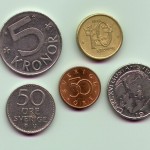 Natural gas declined on Friday and extended its drop for a sixth straight week, the longest losing stretch since 2010, as mild weather forecasts for most of the US high-consumption areas curbed demand prospects for the power-station fuel. A 14th consecutive above-average gain in nationwide gas inventories also helped push prices lower.
Natural gas declined on Friday and extended its drop for a sixth straight week, the longest losing stretch since 2010, as mild weather forecasts for most of the US high-consumption areas curbed demand prospects for the power-station fuel. A 14th consecutive above-average gain in nationwide gas inventories also helped push prices lower.
On the New York Mercantile Exchange, natural gas futures for settlement in August slid 1.72% to close the session at $3.781 per million British thermal units, having shifted in a daily range between $3.862 and $3.764. The energy source added 2.2% on Thursday, rebounding from an eight-month low of $3.744, but nevertheless closed the week 4.3% lower.
The power-plant fuel extended its decline as US natural gas inventories rose at an above-average pace for a 14th straight week and weather forecasting agencies predicted mostly mild weather across most of the US high-consumption areas.
The EIA reported on Thursday an injection of 90 billion cubic feet (Bcf) for natural gas inventories in the week ended July 18th. The build was not as big as some analysts expected but it still was 34 Bcf larger than the 5-year average. Stocks were 20.2% below last year’s reading for the week.
Natural gas market analysts at NatGasWeather.com, who predicted a build of 90-94 Bcf, said the following few weeks will also see massively larger-than-average inputs, at a time when cooling demand is supposed to be peaking. Moreover, the EIA had predicted that marketed gas production will jump by 4.1% in 2014 to 73.08 bcf per day, hitting an all-time high for a fourth consecutive year.
Weather outlook
NatGasWeather.com reported on Friday that the second, and more impressive, in a series of cool blasts from Canada will be over the northern US by the weekend, lowering temperatures and bringing clouds and some rain to the region. Readings will be comfortable over much of the Northeast and Midwest, allowing for air conditioning to be turned off during what is usually the peak cooling season. The southern and western US will remain within an area of high pressure, keeping readings relatively high, apart from the extreme Northwest, which will be briefly subjected to a cooler system. Cooling demand over the next seven days will be low.
In the 8-14 day outlook, NatGasWeather.com projects a neutral trend for the US, with the Midwest and Northeast experiencing several degrees of cooling as cool blasts enter from Canada and reach as far as the Southeast. Later in the period, a brief high pressure build up over the northern US will allow for slightly higher temperatures, but only briefly and not by much. The western and southern states will see little weather excitement, with high pressure dominating the outlook, keeping readings high.
John Kilduff, a partner at Again Capital LLC, said, cited by Bloomberg: “The weather is looking exceedingly mild. We’re seeing below-normal temperatures for at least the next two weeks. The gas market is looking very bearish for the near term.”
According to AccuWeather.com, the high in New York on July 30th will be 80 degrees Fahrenheit, compared to the average of 84 degrees, and readings will further ease, dropping to 77 degrees on August 7th, 7 below usual. Chicago will see temperatures peaking at 80 degrees on July 30th, 4 below the average, but the following cooling will push them down to 74 degrees on August 6th, 9 beneath seasonal.
To the South, Houston will feel seasonal readings on July 30th, with highs at around 93-94 degrees Fahrenheit, but a moderate drop in temperatures is anticipated between August 3rd and August 10th. The high on August 4th will be 84 degrees, well below the average of 93 degrees. On the West Coast, readings through most of the week will be seasonal, peaking at around 84-85 degrees, but again a drop to below-normal levels is expected between August 3rd and August 10th. The high on August 3rd will be 78 degrees Fahrenheit, 6 below normal.
Technical view
According to Binary Tribune’s daily analysis for Monday, in case natural gas for settlement in August penetrates the first resistance level at $3.841 per million British thermal units, it will encounter next resistance at $3.900. If breached, upside movement will probably attempt to advance to $3.939 per mBtu.
If the energy source drops below its first resistance level at $3.743 per mBtu, it will see support at $3.704. If the second key support zone is breached, the power-station fuel’s downward movement may extend to $3.645 per mBtu.




